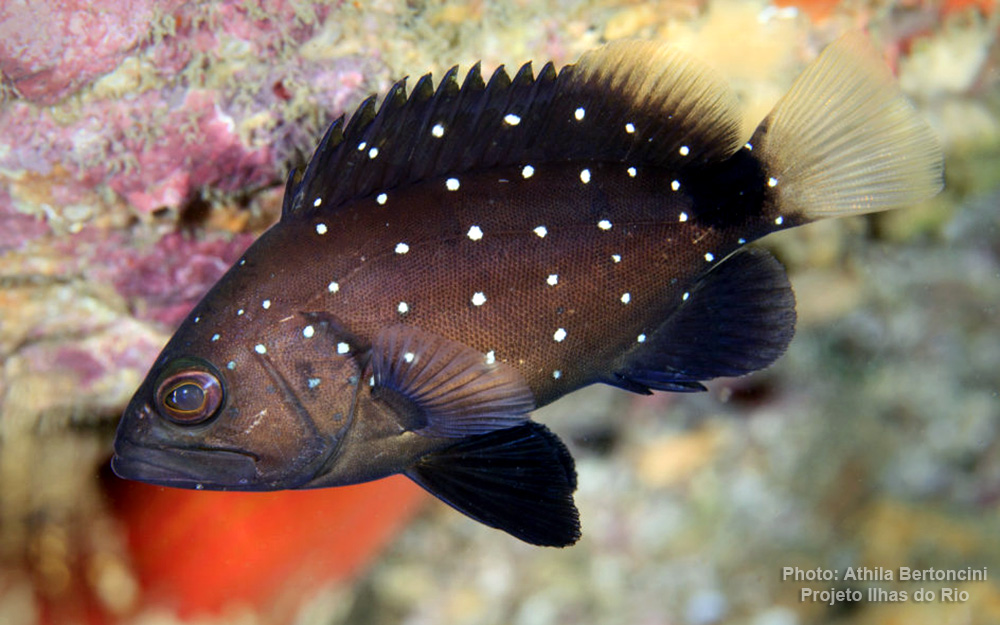Snowy grouper
(Hyporthodus niveatus)

Classification
General data
The snowy grouper (Hyporthodus niveatus) is a species of marine ray-finned fish, a grouper from the subfamily Epinephelinae which is part of the family Serranidae, which also includes the anthias and sea basses. It is found in the western Atlantic Ocean.
The snowy grouper has a robust, compressed, oval body which has its deepest point at the origin of dorsal fin. Its standard length is 2.4 to 2.8 times longer than its depth. The preopercle has a serrated edge and the serrations at its angle are enlarged, where there is also often a spine bent upwards, clothed in skin and located on its lower edge immediately in front of its angle. The upper edge of the gill cover is notably convex.
There are 11 spines and 13-15 soft rays in the dorsal fin while the anal fin contains 3 spines and 9 soft rays. The membranes between the dorsal fin spines have deep notches. The caudal fin has a rear margin which is convex in juveniles of standard lengths less than 30 centimetres (12 in) and is straight or concave in adults.
The overall colour is dark brown with a black margin to the spiny part of the dorsal fin. Juveniles are dark brown and are marked with obvious white spots arranged in vertical rows on the rear part of the head and on the body. These extend onto the dorsal fin and like adults they have a black margin to the spiny part of the dorsal fin while the caudal and pectoral fins are yellow to clear. The upper part of the base of the caudal fin has a deep black saddle-like mark that extends underneath the lateral line.
This species attains a maximum published total length of 122 centimetres (48 in), although are more commonly around 60 centimetres (24 in), and a maximum published weight of 30 kilograms (66 lb).
Distribution
The snowy grouper occurs in the western Atlantic Ocean. It is found around Bermuda and along the eastern coast of the United States from Virginia south into the Gulf of Mexico and the Caribbean Sea. Its range extends along the coasts of Central America and South America from Mexico to the Valdes Peninsula in Argentina. It has been recorded as far north as Massachusetts.










